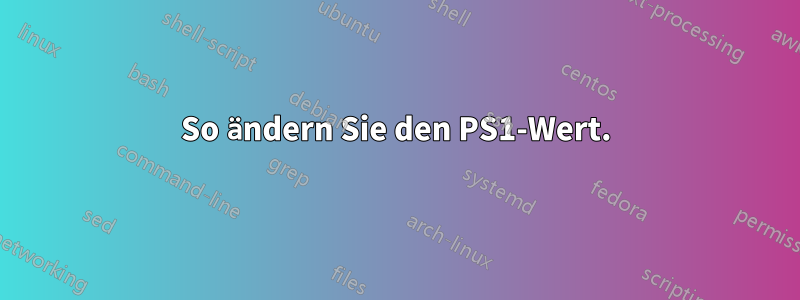
Ich bin als Root einer Linux 2.6.18-Maschine angemeldet. Ich habe den Wert von PS1 wie folgt geändert:
export PS1="$PWD> "
Es funktioniert und codiert die Eingabeaufforderung fest als Home-Verzeichnis, gefolgt von einem >. Jetzt möchte ich, dass das aktuelle Verzeichnis angezeigt wird, in dem ich mich gerade befinde.
Wie stelle ich das ein? Gibt es ein Dokument, in dem die Codes erläutert werden, die erklären, wie die PS1-Variable funktioniert?
Antwort1
Versuche dies
exportiere PS1="[\w]$ "
Hier
w steht für das aktuelle Arbeitsverzeichnis
für weitere Informationen siehe hierVerknüpfung
Bearbeiten: Dies sind die Sonderzeichen, die Bash in PS1 und PS2 versteht
\a : an ASCII bell character (07)
\d : the date in "Weekday Month Date" format (e.g., "Tue May 26")
\D{format} : the format is passed to strftime(3) and the result is inserted into
the prompt string; an empty format results in a locale-specific time
representation. The braces are required
\e : an ASCII escape character (033)
\h : the hostname up to the first '.'
\H : the hostname
\j : the number of jobs currently managed by the shell
\l : the basename of the shell’s terminal device name
\n : newline
\r : carriage return
\s : the name of the shell, the basename of $0 (the portion following the final
slash)
\t : the current time in 24-hour HH:MM:SS format
\T : the current time in 12-hour HH:MM:SS format
\@ : the current time in 12-hour am/pm format
\A : the current time in 24-hour HH:MM format
\u : the username of the current user
\v : the version of bash (e.g., 2.00)
\V : the release of bash, version + patch level (e.g., 2.00.0)
\w : the current working directory, with $HOME abbreviated with a tilde
\W : the basename of the current working directory, with $HOME abbreviated with
a tilde
\! : the history number of this command
\# : the command number of this command
\$ : if the effective UID is 0, a #, otherwise a $
\nnn : the character corresponding to the octal number nnn
\\ : a backslash
\[ : begin a sequence of non-printing characters, which could be used to embed a
terminal control sequence into the prompt
\] : end a sequence of non-printing characters
Antwort2
können Sie sicherstellen, dass Sie wirklich Bash ausführen und nicht irgendeine Art von Busybox?
echo $SHELL
sollte Ihnen die Shell zeigen. (Ich nehme an /bin/bash)
dann kannst du mit
ls -l /bin/bash
ob es irgendwo anders hinzeigt (ein Link) oder ob es die eigentliche ausführbare Datei ist
Antwort3
Dies funktioniert auf anderen Linux-Rechnern. Ich weiß nicht, warum es hier nicht funktioniert.
Vielleicht, weil Sie auf den anderen Maschinen so etwas haben wie
$ PS1="\$(pwd)> "
/tmp> cd /
/>


